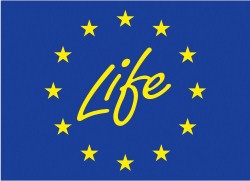Management of invasive Raccoon Dogs (Nyctereutes procyonoides) in the north-European countries. A collaborative project in Sweden, Finland, Denmark and Norway to prevent further dispersal of the invasive Raccoon Dog in the Nordic countries.
Summary description of the project
The raccoon dog (Nyctereutes procyonoides) is an invasive species, native to eastern Asia, introduced as a fur game species to the western parts of the Soviet Union in the 1930s-1950s. It was recently listed in the top 100 most damaging invasive species by the DAISE project. The species has been found to cause substantial ecological damage on the native fauna in the 1.4 million km2 it has colonized by secondary expansion so far in Europe.
This application aims, in alignment with the RIO-convention on biological diversity as well as the Bern- and Ramsar conventions which all Nordic countries have ratified, to prevent the raccoon dog from establishing in Nordic countries and where it have already done so (parts of Finland), it is our duty to try to eradicate or reduce the populations as far as possible and to limit its further expansion to other countries. Eradication and reduction will to a large extent be done by using innovative methods for culling and management. The project also contributes largely to the objectives of the Commission Communication COM (2006) 216 final: Halting the loss of Biodiversity by 2010 – and beyond.
Sweden, Norway and Denmark so far only has sporadic occurrence of raccoon dog, however, last decades mild winters in the north seem to have improved the survival and reproduction for the raccoon dog also far up north where it earlier was not able to reproduce.
In an ongoing project in Sweden we are developing innovative methods that can be used for finding and exterminating raccoon dog occurrence. This is done in an adaptive fashion, where management and research efforts run simultaneously to support end continuously improve each other. However, without including our neighboring countries from where the raccoon dog is currently invading Sweden and then Norway, our efforts will be insufficient.
With this project we want to share knowledge and methods with our neighboring countries and even other countries affected, while continuously improving our selves through gained experience. We want to demonstrate methods for eradication under different climatic and nature conditions, and in areas where population density is low and areas where it is high. Parts of Finland, where the raccoon dog has been established for many years now has large experience of how to hunt and trap the species, while our new and innovative methods can help Finland and Denmark fulfilling their undertakings in stopping further dispersal into Sweden, Norway and Denmark. If nothing is done right now it is very likely it will be too late to stop the raccoon dog from establishing in Sweden and Norway, leading to largely increased cost to try to limit the population to reasonable levels.
The raccoon dog has one of the highest reproduction rates of all mammalian predators, giving birth to up to 18 pups (mean litter size of 10) annually, and with the absence of natural predators would theoretical reach over 10 000 individuals within five years. A Finnish study showed that the cost of the material needed for reducing the negative biological effects of the raccoon dog in wetlands, where they can reach densities of 300 animals per 1000 ha, was 3.3 € per hectare (Linhlahdet Life, 2003-2007). In Sweden there is nine million hectares of wetlands. If the population is allowed to establish before we try to live up to our international commitments, the costs will be around 29.7 million € annually to keep the population wihin reasonable bounds, not including salaries for field staff.
 One of the most important direct outcomes of the project will be to cover the gap in time it will take for Finland and Denmark to initiate this effort by themselves. During the project time both Finland and Denmark will have time to build own management organization, including national funding, using the methods and means demonstrated by the LIFE-project.
One of the most important direct outcomes of the project will be to cover the gap in time it will take for Finland and Denmark to initiate this effort by themselves. During the project time both Finland and Denmark will have time to build own management organization, including national funding, using the methods and means demonstrated by the LIFE-project.
The methods developed and the early warning systems the project will set up in the Nordic countries will be directly transferrable to both the raccoon dog in other European countries as well as to other invasive animal species, especially those living in families or other forms of social groups. The project will act as a demonstration and innovative project for managing invasive species in Europe.
At the end of the project period an International Conference will be arranged to spread the experiences from the innovative methods and results from the project.
